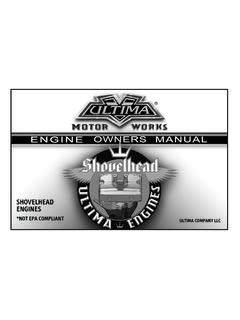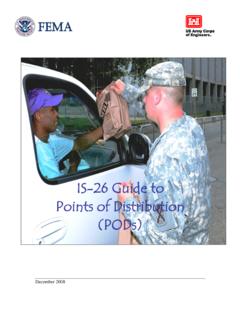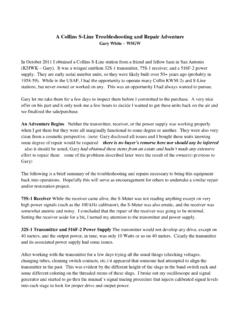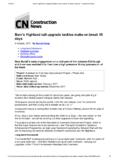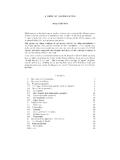Transcription of Chapter 3
1 Chapter 3 How to Make a Cowl Panel or Just a Part of It for a 1933 FordHere you can see a fi nished product that normally I let the students make in every Step 1 Class. It s a very good project. You use the bead roller a lot and also the shrinker/stretcher toolAnother picture of the cowl panel451. LAY OUT. This was a big problem for me many years ago in my metal shaping career. How do I start to make a panel? To try and cut out a panel that s close to what you think will be enough doesn t work. It s either too small or too big to work with; too much material to work what I learned over the years is that if I start a project and make a paper/cardboard template for the part on a panel that s flat or almost flat (in this case we make the template so it fits inside the bead on all four edges), then I know where the beads starts and that s all I want now.
2 You can hold the paper easiest with some magnets and mark the edge with a pen or some-thing that gives you a mark from the edge. Cut out the paper smooth and put it back on the panel, so you can see if it fits well. The better you make the templates, the better your piece will be when you re done; it will be an exact Take the paper and put it over a sheet of 19G and clamp it with Measure on the panel how much extra you need from the bead and out. Let s say this is 3 1/2 .4. Take a divider and adjust that so it s 3 1/2 between the points. Hold one of the points to the edge of the pa-per and draw a line with the divider so it gives you a scribe on the When you scribe the panel in the curve, be sure that you hold the divider parallel to the edge.
3 It s easy to scribe it so it s not parallel Do the same thing on all four edges so that you will know the size of the cowl panel. This technique can be used on any panel you would like to Now it s time to cut out the sheet. Here I am using a Makita electric shear. It works really well. Try a shear be-fore you buy one. Each is different and if the overlap on the shears is too much, it s really hard to cut into a curve; something to remember:8. Look to the front of the shear so you can see the shears where they cut. It makes it so much easier for you to cut after on line and you don t need to grind the edge so much con;t. Makita JS1600 - ShearPowerful motor for continuous use in 16 gauge mild steel and 18 gauge stainless steel Built-in thickness gauge for convenienceLever switch for comfort and easy useEasy replaceable blades with a total of 8 cutting edges eachLightweight for easy one-handed operationAll ball and needle bearings for long lifeDouble insulated9.
4 Put the paper back on and hold it with the magnets. Mark it all the way around with a Make a little mark with the scribe (11mm / 7/16 ) inside the scribe you just did (just a little mark in the end and in the beginning).11. Also mark the paper with a pen and make a line 11mm / 7/16 inside the edge (see picture).12. Then take a 90 angle that you bent in a break (size is about 32 mm / 1 1/4 ) (bent in the middle). Go to the shrinker/stretcher and stretch it so it fits the curve/line on the paper. Be sure 13. This is how it should look when you are Here you have both sides; the front and back parts of the cowl con it fits very well because later on you are go-ing to use this template as a guide in the bead roller and every thing that s wrong here on this edge will copy over to the bead because the dies in the bead roller follow the guide (90 template).
5 It really helps if you look along the length edge when you make these so you can see every little kink .4815. Put the template on one side of the sheet and adjust so it s parallel to the 11mm / 7/16 inside the scribe done in picture 10. It can be a little tricky to have it so it s parallel, but, adjust it up or down and in and out until it s parallel. Clamp it with two vise grips or the new Lock Jaws that are self adjusting. They are really To hold the template in the middle, I recommend us-ing a spot welder and make one spot weld in the middle some where. That really helps the template so it s not moving and by doing only one spot weld, when you are done, you can take the clamps away and just turn it and it will break the spot weld loose. If you use more spot welds, which you can do, you will need to drill them off and that s extra work.
6 17. So now it s time to go to the bead roller and put in some new dies. This time you will be using a pair of dies that are specially made for a 33- 34 Ford. Re-member to adjust the shaft so you have the gap (19G) between the dies in and out. Up and down you will be adjusting later when you run the cowl panel. You will be using these dies on the rear quarter panel Put the sheet between the dies and start on the straight part of the cowl panel. It s easier to do that and go into the curve on the cowl panel. Turn down the upper die so the dies touch and then turn it down one more turn. When you do that, it s very impor-tant that you are holding the sheet level and keep the sheet level all the way when you run it in the bead roller. If you don t, you are going to have a mark from the edge of the top die and also the bead will be away from the template so the whole bead is going to be on the wrong spot.
7 If that happens you can go to the LAZZE Wheel and flatten the bead out between the two flat wheels and start over again in the bead the speed first so it s comfortable for you. Start the machine so the sheet goes to the right and stand so you feel comfortable and also so you are standing on the side where you can see the sheet going into the dies. You can stop if you need to, but, I recommend starting the machine and letting it go. You will have a better the dies so they are parallel to the template. If you force too much toward the template, you can actually move the template and that s not good .. 4919. Continue the entire way down and as you can see here, the dies are parallel to the template and that s what you are searching It can be a little hard down in the curve, however, if you feel like it, stop and go again.
8 Here you can see three spot welds. The templates have been used more than one time. Here only one spot weld is being Continue doing this about 4-5 times. Between each run you can turn down the upper shaft about 1/2 of a turn each time. The last time you can turn down the sides so they touch each other lightly and then start the machine and let the machine flex the Now you are done with one side and you can take it to the table and remove the template and vise Turn the template back and forth and the spot weld will break loose. Now you are done with one Here you can see a little mark from the spot weld that can be fixed with a hammer and a dolly on the sand Put the template on the other side of the sheet and adjust it so it s parallel to the 11mm / 7/16 inside the scribe you did in picture it with two vise grips or the new Lock Jaws that are self adjusting.
9 They are really good. Spot weld the template as well26. Repeat the same thing on this side but remember to start from the other side. Now you are going the other direction. Start on the straight part as you did on the other You might need to move your hands when you get to the curve so that you are standing comfortably. When you have done 4-5 runs and are all the way down with the bead, remove the template and # 1 and #2 of the beads are Take the sheet over to the table again and lay the cardboard paper over the sheet on the outside and adjust it so it fits the top. Now you can measure on the bottom and it should be 52mm / 2 1/16 .29. Turn the sheet upside down and make a scribe on 52mm / 2 1/16 all the Go back to the bead roller again using the same dies this time, but, it s upside down and because it s an outer radius, you can use the template on the machine.
10 Adjust the guide so you have 52mm / 2 1/16 from the guide out to the first edge on the bottom die be-cause that s where you are going to start the Put the sheet between the dies and as you can see here you can t go all the way out on both ends because the bead that you did as # 1 and # 2 are in the way and you will need to start a little bit in with the bead. Stand on the side that feeds the sheet into the dies and check the touch-ing points of the template as that s a little before the center of the shaft, then the sheet will automatically try to go into the Here you can see more exactly where the touching point As you can see here I am holding the sheet level but only for the first 3 of the sheet (outside the dies). Don t hold it down more because then you are going to have a mark from the lower die edge.

